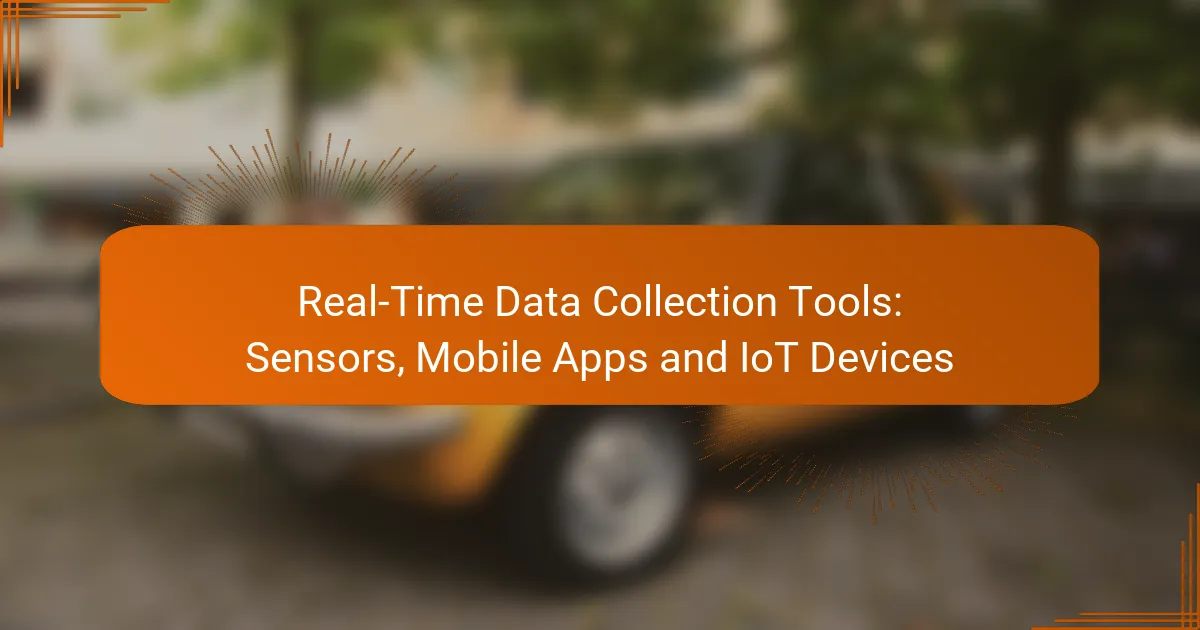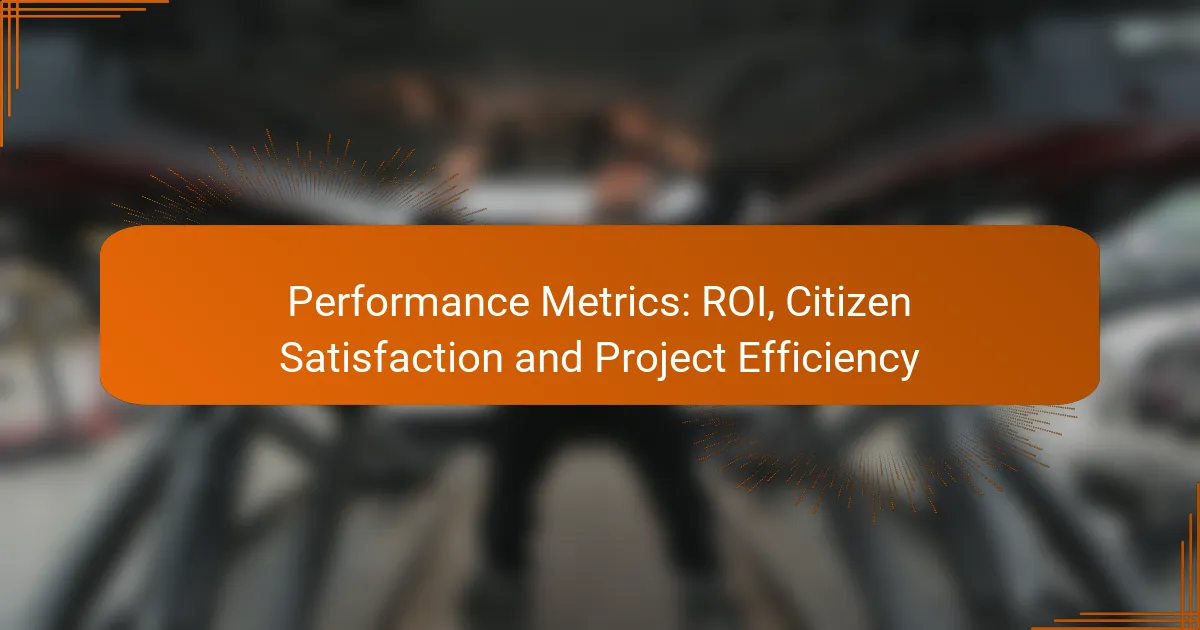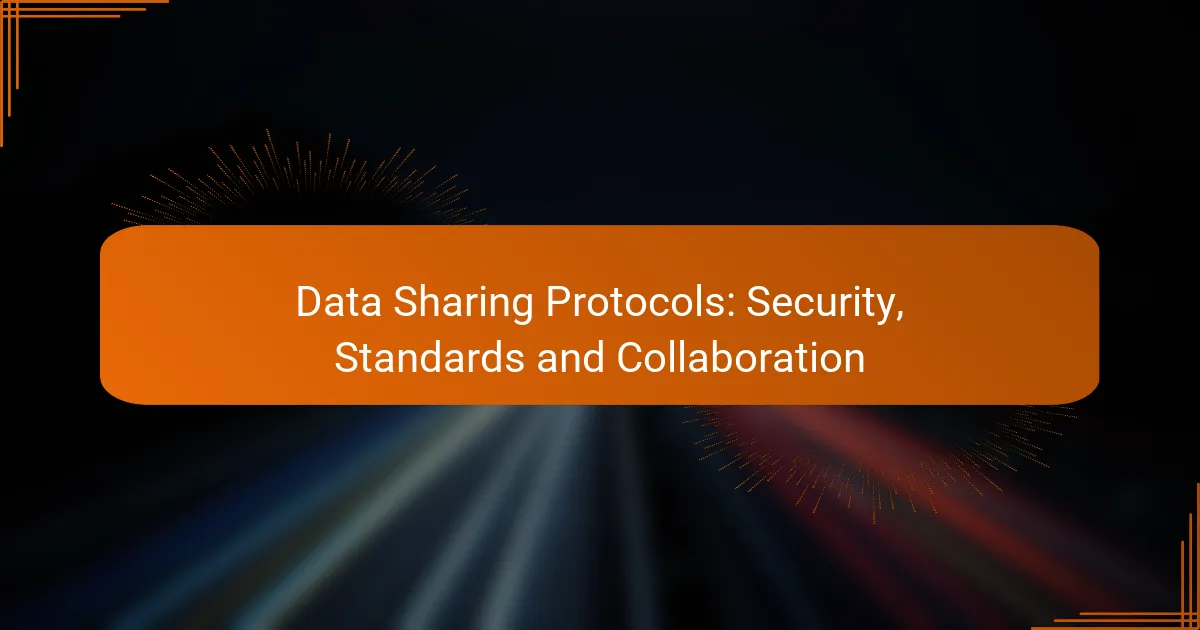Real-time data collection tools, such as sensors, mobile apps, and IoT devices, play a crucial role in modern data-driven decision-making. By continuously gathering and transmitting information, these tools empower organizations to analyze data instantly, leading to enhanced operational efficiency and timely insights.
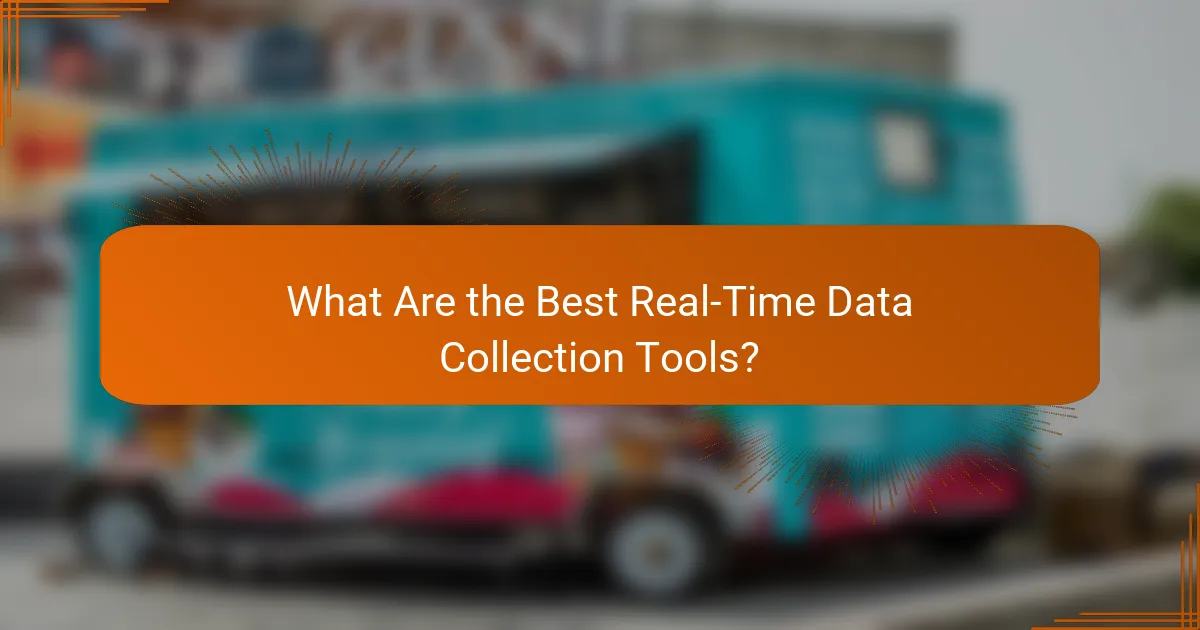
What Are the Best Real-Time Data Collection Tools?
The best real-time data collection tools include mobile apps, IoT devices, and sensor technologies, each serving unique purposes and industries. These tools enable organizations to gather, analyze, and act on data instantly, enhancing decision-making and operational efficiency.
Mobile Apps for Data Collection
Mobile apps are versatile tools for real-time data collection, allowing users to input and access data on-the-go. They are particularly useful in fields like field research, healthcare, and logistics, where immediate data entry is crucial.
When selecting a mobile app, consider factors such as user interface, compatibility with existing systems, and data security features. Popular options include SurveyMonkey, Google Forms, and specialized apps like Fulcrum for field data collection.
IoT Devices for Real-Time Monitoring
IoT devices facilitate continuous monitoring and data collection from various environments, including smart homes and industrial settings. These devices can track metrics such as temperature, humidity, and equipment performance, providing valuable insights in real-time.
When implementing IoT devices, ensure they are compatible with your existing infrastructure and consider the data transmission methods, such as Wi-Fi or cellular networks. Examples include smart thermostats, wearable health monitors, and industrial sensors.
Sensor Technologies for Data Gathering
Sensor technologies are critical for gathering precise data in real-time across various applications, from environmental monitoring to manufacturing. They convert physical phenomena into measurable data, such as light, temperature, or motion.
Choosing the right sensor involves understanding the specific requirements of your application, including sensitivity, range, and environmental conditions. Common types include temperature sensors, pressure sensors, and motion detectors.
Comparative Analysis of Tools
When comparing real-time data collection tools, consider their ease of use, data accuracy, and integration capabilities. Mobile apps are user-friendly but may lack the depth of data provided by IoT devices and sensors.
IoT devices excel in automation and continuous monitoring but can involve higher initial costs and complexity. Sensors provide precise measurements but may require calibration and maintenance. Assessing these factors will help you choose the most suitable tool for your needs.
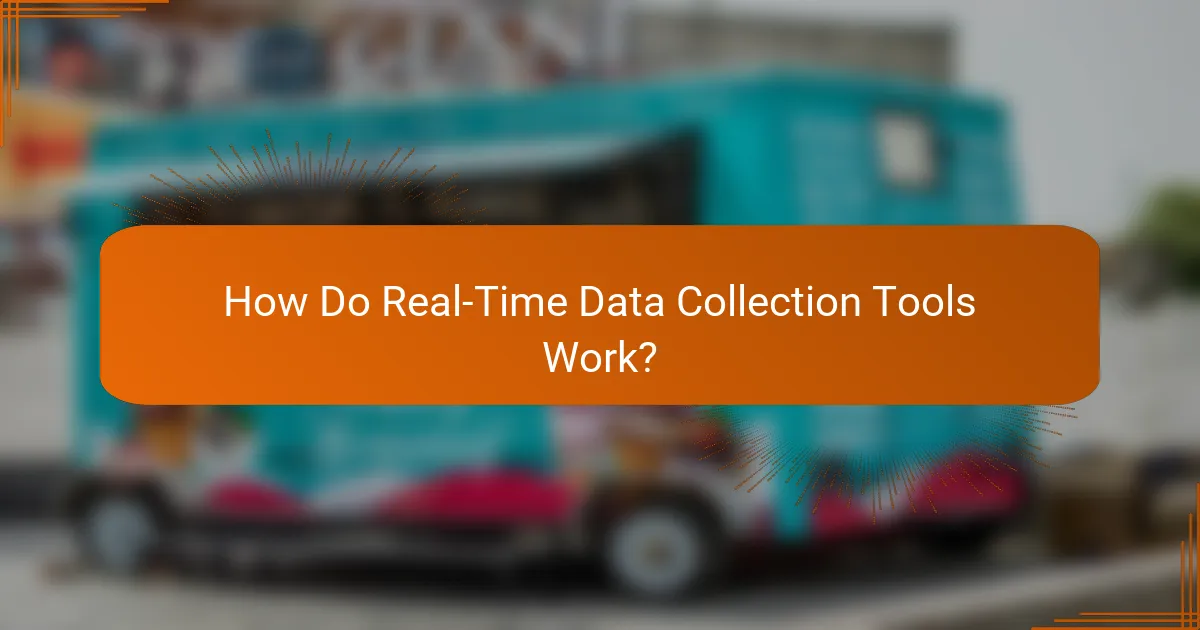
How Do Real-Time Data Collection Tools Work?
Real-time data collection tools operate by gathering information continuously through various devices like sensors, mobile apps, and IoT devices. These tools transmit data instantly to a central system for analysis, enabling immediate insights and actions.
Data Transmission Methods
Data transmission methods are crucial for ensuring that collected information reaches its destination without delay. Common methods include cellular networks, Wi-Fi, and Bluetooth, each offering different ranges and speeds. For instance, cellular networks can cover large areas but may incur higher costs, while Wi-Fi is ideal for localized environments.
When selecting a transmission method, consider factors such as data volume, required speed, and environmental conditions. For example, in urban settings, cellular networks may be more reliable, while in a factory, a robust Wi-Fi network might suffice.
Integration with Cloud Services
Integrating real-time data collection tools with cloud services allows for scalable storage and processing capabilities. Cloud platforms like AWS, Google Cloud, and Microsoft Azure provide the infrastructure needed to handle large datasets efficiently. This integration facilitates easy access to data from anywhere, promoting collaboration and timely decision-making.
Ensure that the chosen cloud service complies with relevant data protection regulations, such as GDPR in Europe or CCPA in California. This compliance is essential to safeguard sensitive information and maintain user trust.
Real-Time Data Processing Techniques
Real-time data processing techniques enable immediate analysis and response to incoming data. Techniques such as stream processing and complex event processing allow systems to analyze data as it arrives, rather than storing it for later use. This capability is vital in applications like fraud detection and real-time monitoring of industrial systems.
Utilizing frameworks like Apache Kafka or Apache Flink can enhance processing efficiency. When implementing these techniques, consider the trade-offs between processing speed and accuracy, as faster processing may sometimes lead to less thorough analysis.
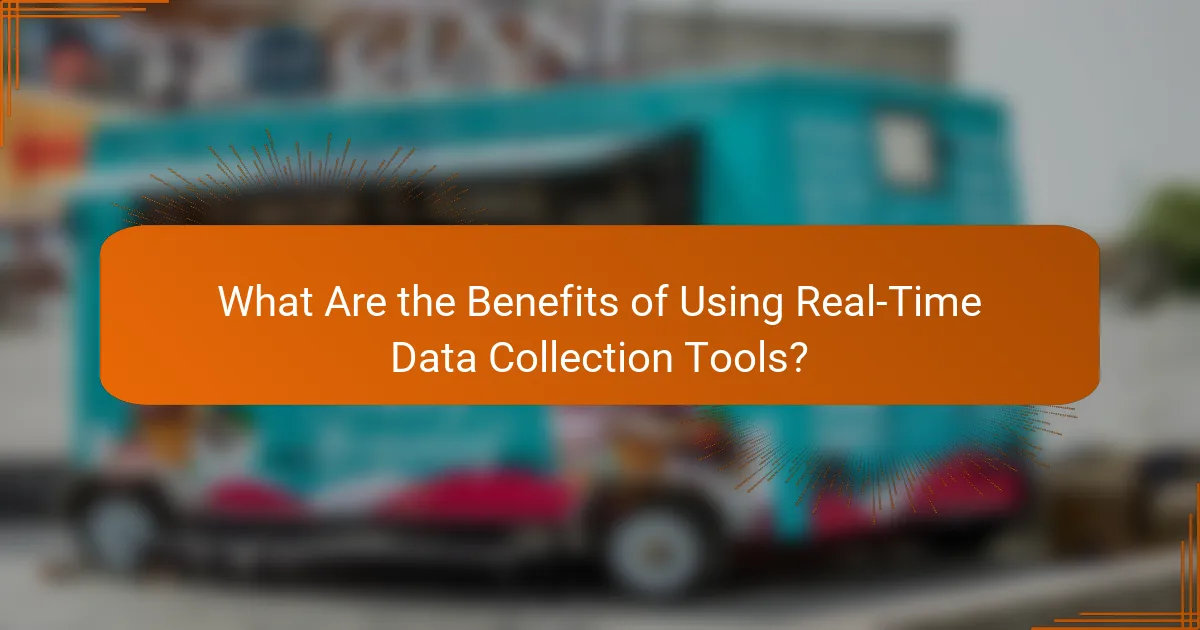
What Are the Benefits of Using Real-Time Data Collection Tools?
Real-time data collection tools provide immediate access to information, enabling organizations to make informed decisions quickly. These tools, including sensors, mobile apps, and IoT devices, enhance operational processes and offer valuable insights for businesses.
Improved Decision-Making
Real-time data collection tools significantly enhance decision-making by providing up-to-the-minute information. This immediacy allows businesses to respond swiftly to changes in market conditions or operational challenges, reducing the risk of outdated decisions.
For example, a retail store using real-time inventory sensors can quickly adjust stock levels based on current sales trends, ensuring they meet customer demand without overstocking. This agility can lead to increased sales and customer satisfaction.
Enhanced Operational Efficiency
Utilizing real-time data collection tools can streamline operations by identifying inefficiencies and optimizing processes. By continuously monitoring performance metrics, organizations can pinpoint areas for improvement and implement changes promptly.
For instance, a manufacturing plant equipped with IoT devices can track machine performance in real-time, allowing for predictive maintenance. This proactive approach minimizes downtime and maximizes productivity, ultimately saving costs.
Real-Time Insights for Businesses
Real-time insights derived from data collection tools empower businesses to make strategic decisions based on current trends and customer behavior. This capability is crucial for adapting marketing strategies and enhancing customer engagement.
Businesses can leverage mobile apps to gather customer feedback instantly, allowing them to adjust their offerings based on preferences and satisfaction levels. This responsiveness can lead to improved customer loyalty and increased revenue over time.
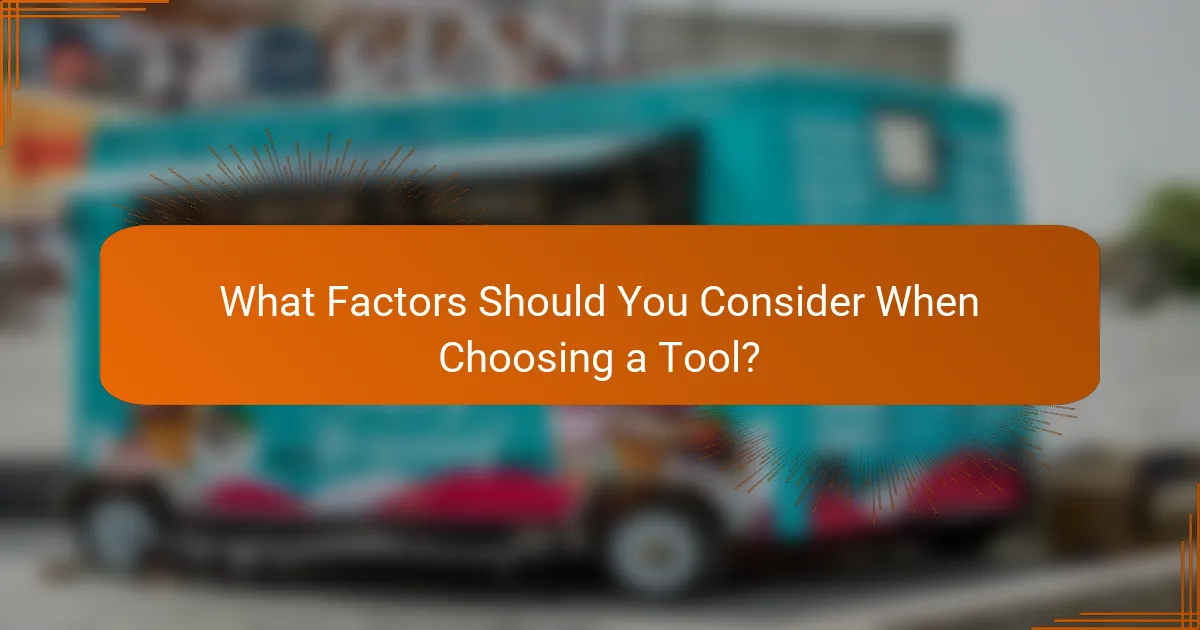
What Factors Should You Consider When Choosing a Tool?
When selecting a real-time data collection tool, consider compatibility with existing systems, scalability, and budget constraints. These factors will significantly impact the effectiveness and efficiency of your data collection efforts.
Compatibility with Existing Systems
Ensure that the tool you choose integrates seamlessly with your current systems. Compatibility reduces the need for extensive modifications and minimizes disruptions during implementation.
Check for support of common protocols and data formats, such as MQTT or JSON, which can facilitate easier integration. Tools that offer APIs or plugins for popular platforms can also enhance compatibility.
Scalability of the Solution
Scalability is crucial for accommodating future growth in data volume or user demand. Choose a solution that can expand without requiring a complete overhaul of your existing setup.
Consider whether the tool can handle increased data loads or additional sensors and devices. Solutions that offer cloud-based options often provide better scalability, allowing you to adjust resources as needed.
Cost and Budget Considerations
Evaluate the total cost of ownership, including initial setup, ongoing maintenance, and potential upgrade expenses. Budget constraints can significantly influence your choice of tools.
Look for transparent pricing models that outline all costs, including subscription fees or pay-per-use charges. Free trials or tiered pricing can help you assess value before committing to a long-term investment.
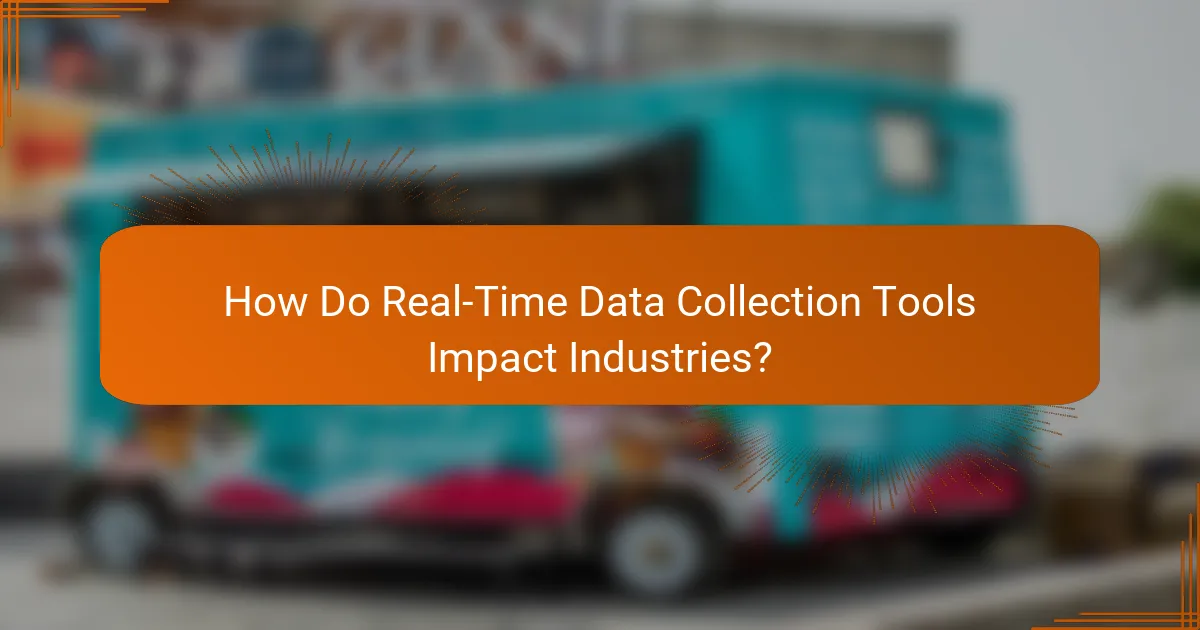
How Do Real-Time Data Collection Tools Impact Industries?
Real-time data collection tools significantly enhance operational efficiency across various industries by providing immediate insights and facilitating timely decision-making. These tools, including sensors, mobile apps, and IoT devices, enable businesses to monitor processes, track performance, and respond to changes swiftly.
Healthcare Applications
In healthcare, real-time data collection tools are transforming patient care and operational management. Wearable devices and mobile health apps allow for continuous monitoring of vital signs, enabling healthcare providers to respond quickly to any anomalies.
For example, remote patient monitoring systems can alert medical professionals if a patient’s heart rate exceeds safe levels, potentially preventing emergencies. Additionally, hospitals utilize IoT devices to track equipment usage and location, improving resource allocation and reducing downtime.
When implementing these technologies, healthcare facilities should ensure compliance with regulations such as HIPAA in the U.S. to protect patient data. Regular training for staff on using these tools effectively is also crucial to maximize their benefits.
